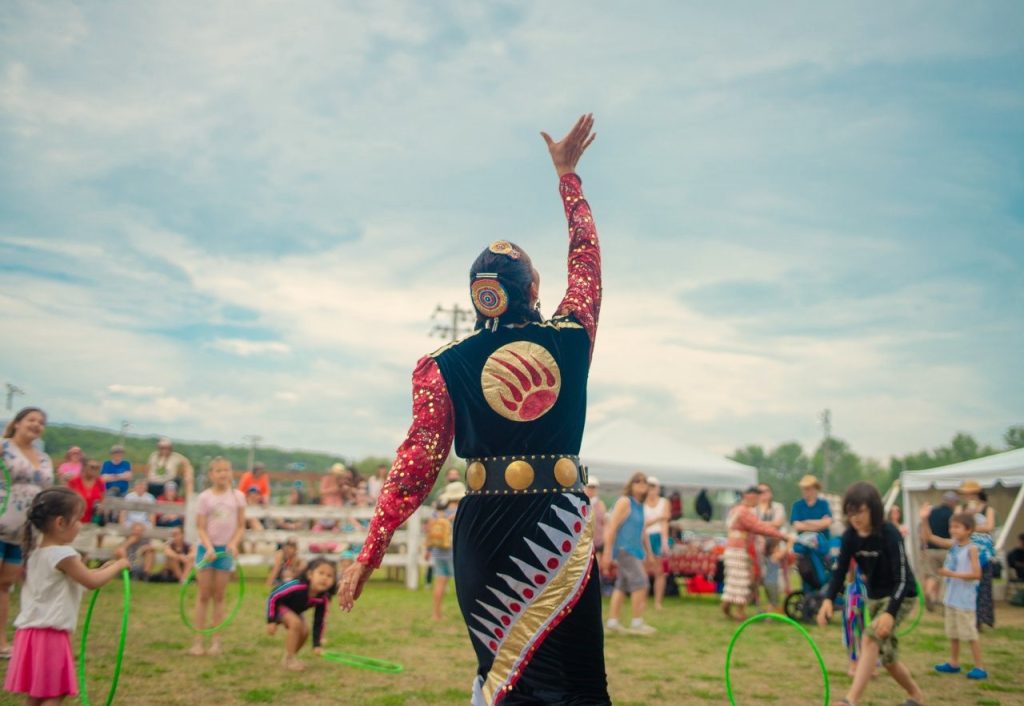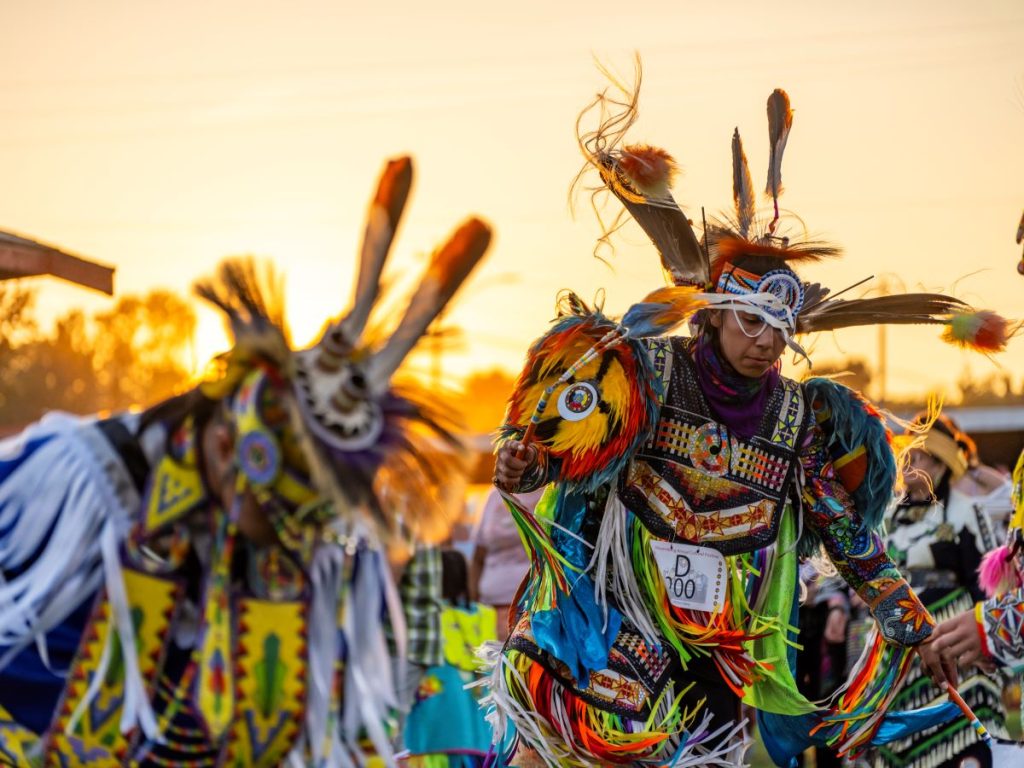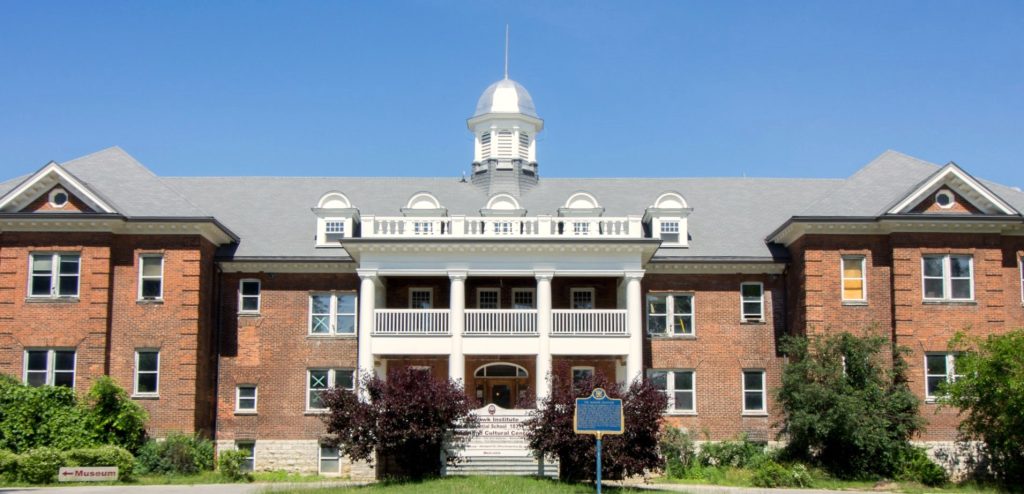Our Indigenous communities have lived on the land we now call Ontario for thousands of years, so it should come as no surprise that participating in an Indigenous-owned and led experience is a must on a trip to Ontario. Indigenous tourism in Ontario takes many forms–from visiting historic Indigenous sites, to learning from Indigenous communities, or taking a tour with an Indigenous-owned tour operator.
It’s important to recognize that there are a wide range of First Nations Peoples in Ontario. In fact, there are at least 133 separate First Nations Communities under the umbrella of 14 nations including the Mushkegowuk (Cree), Mohawk, Tuscarora, Seneca, Cayuga, Oneida, Onondaga (the Haudenosaunee – Onkwehonwe Peoples), Delaware, Mississauga, Chippewa, Pottawotami, Algonquin, Odawa, and Anishinabe (the Anishinaabek Peoples).
There are territories that are both ceded and unceded, and for reference, an unceded territory is one that “has not relinquished title to its land to the government by treaty or otherwise.”
I’ve had the privilege of participating in several Indigenous experiences across Canada over the years, but I’m always hearing about new businesses and initiatives popping up, and that’s music to my ears (and, quite frankly, necessary to tell the full story of what it means to be in this province and on this land.)
If you too are looking to dip your toes into Indigenous tourism here in Ontario, here are some experiences you should definitely have on your radar.
How to experience the wonders of indigenous tourism in Ontario
Spend the weekend in Manitoulin Island (Lake Huron)



This is one of the most famous destinations in Ontario when it comes to learning about Indigenous culture and history, and it’s also worth noting that Manitoulin Island is the largest freshwater island in the world. It’s so big that it’s home to over 100 lakes within the island alone!
Extensive archaeological research has been conducted on the island, and it was concluded that Indigenous peoples have called Manitoulin Island their home from as early as 10,000 BCE. To me, that’s a fact worth spending a moment with to grasp its full gravity.
In terms of education and exploration, there are many ways to learn about the island’s seven First Nation Reserves:
- Visit the Ojibway Cultural Foundation Museum to learn about the Anishinaabe culture, history and spiritual teachings
- Walk the Bebamikawe commemorative trail or the Cup and Saucer trail
- Take a Anishinaabe-style pottery class
- Watch the Rolling Thunder dance performances
- Learn to cook with natural ingredients sourced on a foraging hike
- Buy authentic indigenous arts and jewellery at Lillian’s Indian Craft Shop
- Dine at North46, a restaurant with a focus on Aboriginal cuisine boasting stunning views of Lake Huron and the LaCloche Mountain range
If you’re looking for a more guided experience and outdoor adventures, Indigenous-owned operators such as Wikwemikong Tourism and Wass Tours are great places to start. Wikwemikong Tourism offers many experiences such as hiking and fishing, designed to share the cultures and traditions of the Anishnaabek people. In addition, Wass Tours specialise in custom ice fishing trips in Georgian Bay that also share the island’s First Nations history and culture.
Eat at Mādahòkì Farm (Ottawa)



They’re an Indigenous-owned and operated organization, specializing in programming for kids, families, and adults to teach many different aspects of Indigenous culture.
Visiting the farm, you’ll have the opportunity to walk the Legacy Trail on-site, and see the endangered Ojibwe Spirit Horses. There’s also a marketplace store offering everything from art to food, from over 40 local Indigenous makers. I’d strongly recommend taking a look through what’s on offer at the marketplace store—including their own ethically sourced fair-trade chocolate, Raven Rising.
They’re also known for their farm-to-table dining experiences, and if food is your thing in general, then consider visiting the Anishinaabe owned and operated Beandigen Cafe before taking off from Ottawa.
Visit the Woodland Cultural Centre (Brantford)


I had thought that I had a reasonable comprehension of indigenous history in this province and nation, but I’m grateful for my recent visit to the Woodland Cultural Centre, as it was a reminder that I had so much more to learn.
In short, the Woodland Cultural Centre is essentially an Indigenous educational complex which operates a museum, specific exhibitions, runs workshops, presentations, and tours (including virtual tours) – and all with the goal of sharing (and preserving) the Hodinohsho:ni worldview.
The staff and volunteers here are simply incredible, and this is a very warm, welcoming place at its core. I got the impression that the staff and guides were open to any questions, and aimed to ensure their answers served as crucial baseline of understanding for visitors as they continue to learn by exploring Indigenous tourism opportunities in this province.
Visit the Crawford Lake Longhouse Village (Milton)


Crawford Lake Conservation Area is a beautiful protected area near Toronto to take a walk around, but it’s also home to a reconstructed 15th Century Iroquoian Longhouse Village. Over the past 50 years, excavations in the park have revealed there used to be 11 longhouses on the site, along with over 10,000 artifacts from those who used to live here.
The village today is home to three reconstructed longhouses, including the Deer Clan Longhouse, and plenty of opportunities to learn more about Indigenous culture. The Three Sisters Garden and Mashkiki Gitigan (Medicine Garden) is also located behind the longhouse village, and is a great place to learn about Indigenous agricultural and healing plants. Walking around the grounds here gave me a much better vision of how Indigenous communities here lived and thrived, something I’m immensely grateful for.
This is an easy half-day trip from Toronto, by the way!
Paddle in the Toronto Islands with Oceah Oceah (Toronto)

If you’re looking for a great way to get outside in and around Toronto, and support an Indigenous, woman-owned business, then you’ll want to take a Stand Up Paddle Boarding lesson, tour or yoga with Oceah Oceah. Sisters Jenifer and Sharon Rudski’s mission is to “connect people and build community on the water in Toronto” through their business.
They offer tours, rentals and activities departing from Budapest Park on Lake Ontario that head up the Humber River, which is an essential waterway in Toronto. Paddling along this river is a special way to feel connected to nature, while still being in the centre of the city. They even offer tours of the Toronto Islands.
Experience a 9 course tasting menu through cuisine with Naagan (Owen Sound)

There are innumerable opportunities to better understand and appreciate Indigenous cultures in this province, and if you’re looking to dive deeper, also consider exploring culture through food with a 9 course tasting menu featuring progressive aboriginal cuisine that’s been foraged or locally sourced. It’s called “Naagan” and it’s run by Zach Keeshig, near Owen Sound.
Stay at a luxury eco-retreat in Whitefish River First Nation


“Among the Trees” is an experience which aims to rebrand what it actually means to go “camping.” They want you to meaningfully connect with the natural environment, and do so by disconnecting from the hustle and bustle of the world and trading views of city streets with views of the stars under your private geodome, or by watching the sun peak its head up over the La Cloche Mountains.
It’s worth noting that many people stay here, then use it as an access point to explore places like McGregor Bay, Iroquois Bay, Killarney Provincial Park, Baie Fine and Frazer Bay.
Open your heart (and mind) to indigenous experiences in Ontario
Above, I’ve listed just a few Indigenous tourism opportunities in Ontario that have helped me develop a whole new perspective on what it means to explore this province. Of course, there are so many more ways to experience Indigenous culture and tourism in Ontario than this list.
Many First Nations across the province hold powwows at various times throughout the summer and year. Most are open to the public, usually with an admission fee, and they’re a great way to celebrate Indigenous culture as a tourist (and get your fill of delicious bannock and other Indigenous culinary delights). I did just that on a recent visit to Thunder Bay, and it ended up being one of the highlights of my time there, and something I’ll never forget.
In addition, you can always check which indigenous nations are close to you when travelling, and look for their events pages on their websites. Remember, you don’t have to be so measured in your approach. Sometimes it’s as simple as finding a local indigenous restaurant in a city you’re visiting.






